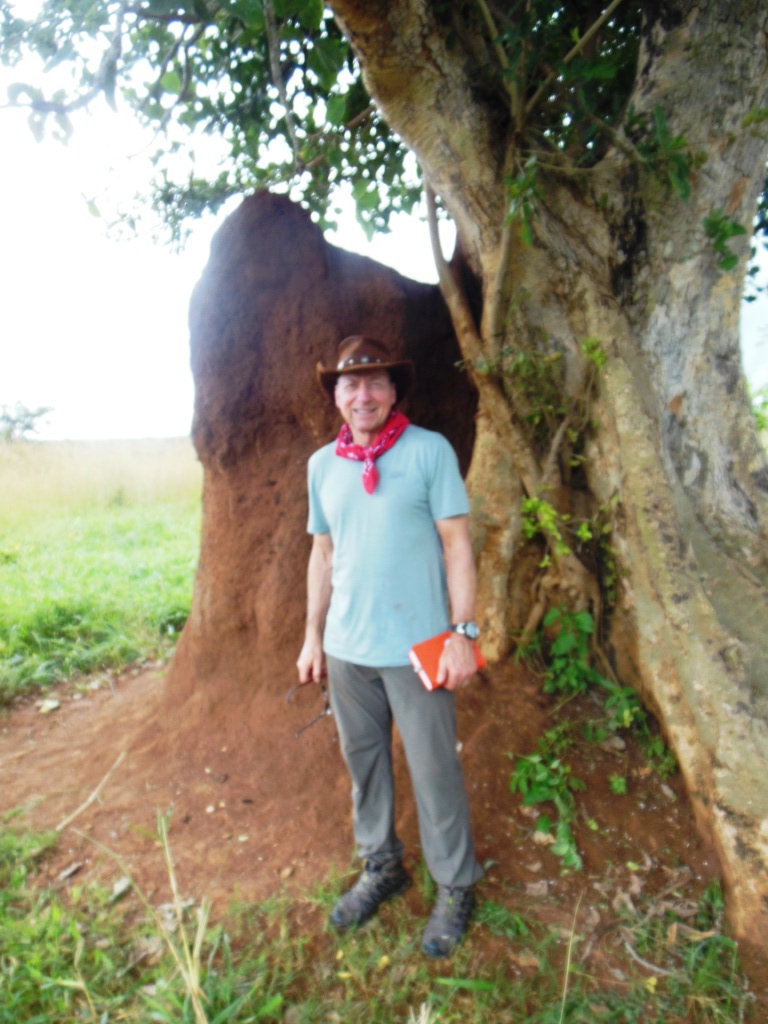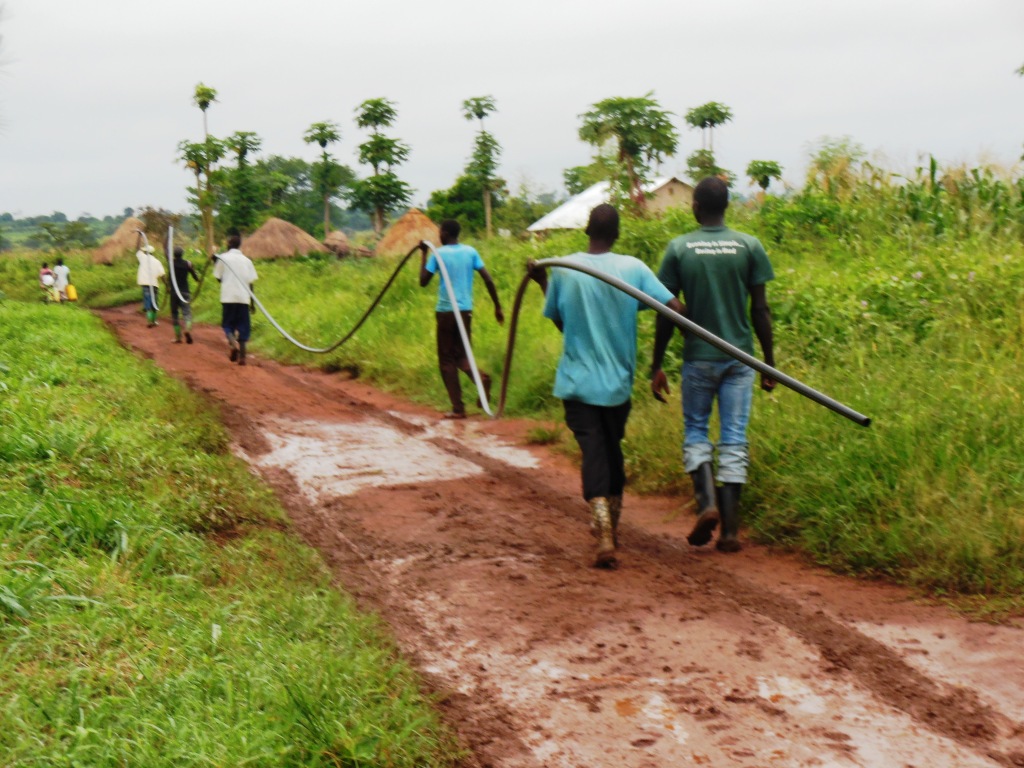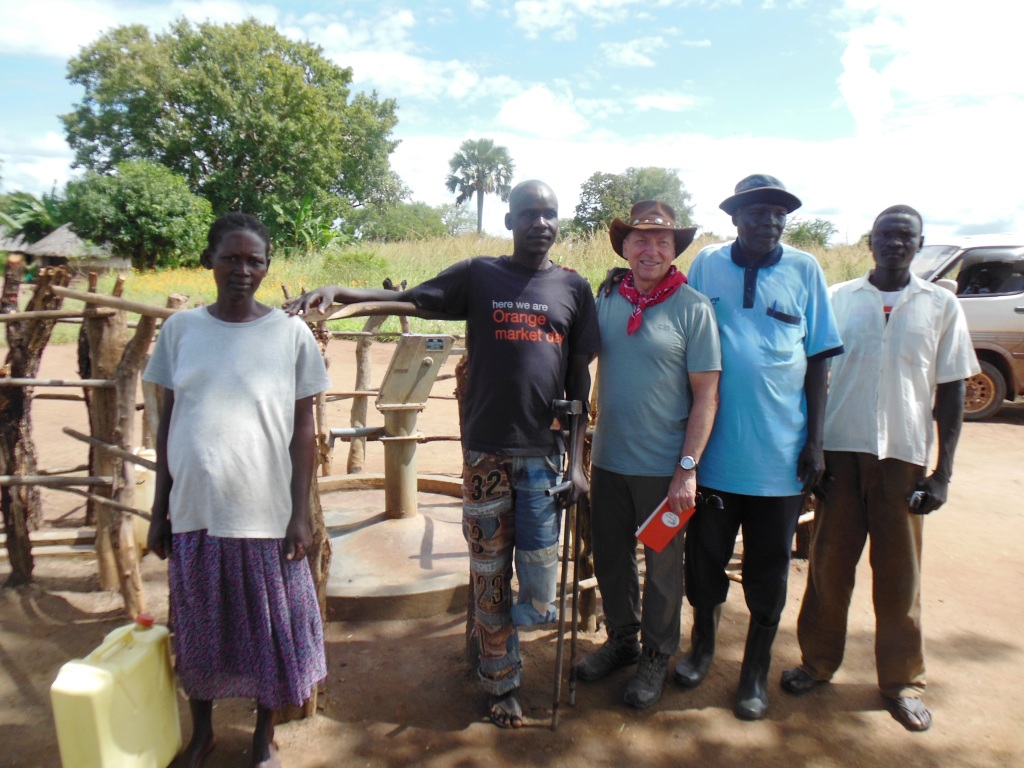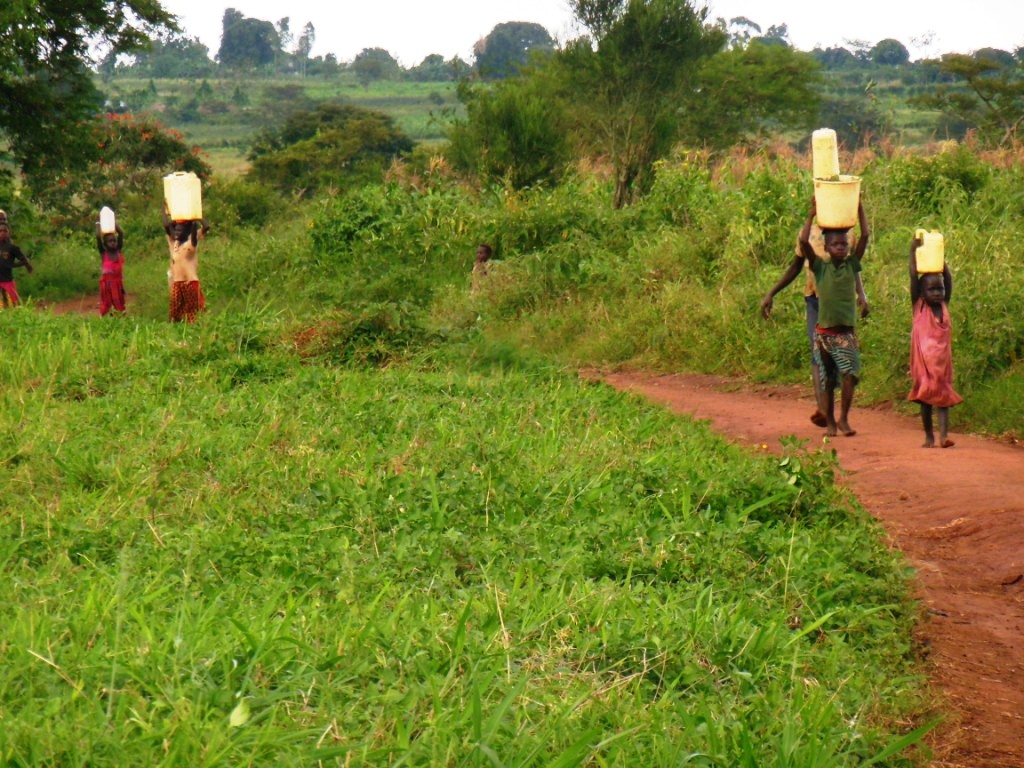I returned home to Absarokee, Montana after a 36 hour trip on 17 – 18 November. After debriefing and reflections with my colleagues and downloading the many photographs I’ve realized that it was a remarkable trip. I’ve assembled a series of photographs which to me portray the “faces of progress” we met in Uganda.
At about 70, Oppobo Witty is one of the oldest Ugandan men I’ve met. He is a survivor of the LRA War in northern Uganda. Five of his sons were killed by the LRA, four of them in one night at his family compound near the site of this photograph. He has been our “bridge” between the community of LRA refugees and the current resettlement of their ancestral lands in the north. He now advocates for clean water and better living conditions for his surviving descendants and all residents trying to resettle Northern Uganda. Hope 2 One Live (H2O) and HydroSolutions assisted with the installation of a new well on his family’s property which replaced contaminated surface waters and will be used to supply water to a new drip irrigation system.
Richard Angoma is shown here in front of the twin water tanks served by the solar powered well sponsored by H2O with HydroSolutions assistance on the FEM Farm that he manages. This multi-talented man is responsible for orchestrating an amazing turnaround in the fortunes of the many LRA war refugees who resettled on the FEM Farm near Masindi, Uganda. On my first trip to the Farm in 2008, water borne diseases and malnutrition were still prevalent among the 40 families resettled there. Today, other than a few families who chose to stay, there are no more refugees on the Farm, and people generally have adequate food. After helping making safe drinking water and drip irrigation available to residents, Richard is now leading grassroots economic development efforts among the surrounding villages.
Sister Zapporo (center) of the Little Sisters of the Immaculate Heart of Mary in Opit, Uganda, just received her Masters Degree in animal husbandry from Makerere University. She is pictured here with her staff and mother superior in a new goat house built on the Sister’s property. The goat breeding project, funded largely by Montana donors to Hope 2 One Life, Inc (H2O) of Billings, will provide income both for the Sister’s education and community work, and for financial support of the health care clinic built by H2O which improves access to care in a rural area of central Uganda. HydroSolutions assisted with installation of the well which serves this farm.
Terence Acaye (on left) was for many years the head of the Kitgum Infant Care Center which received and cared for the most helpless of victims of the LRA War in northern Uganda. Terence now is our “go-to” person for coordination, scheduling and organization of humanitarian aid to northern Uganda. He is a skilled manager, knows the local language and customs, and also speaks our western way of doing business. Without him, we would have a very difficult time accounting for the money spent and work performed there. He will be serving as a mentor for the next generation of Ugandans leading development of the post-war era.
Bosco Tolit (in red) is shown here holding a component of a ¼-acre drip irrigation system he is installing at the Lariabe village near Palabek in northern Uganda. With a degree from Makerere University, he has returned to his ancestral lands to assist with implementation of economic development programs to improve lives and sustainability. Recent disruptions in weather patterns have left the people of this region facing hunger. Drip irrigation from water wells sponsored by H2O with assistance of HydroSolutions offers hope that vegetables can be produced even during the upcoming dry season. He worked closely with me on this trip and will be downloading the water level data collected by the transducers we installed on this trip. Bosco’s desire to serve his people is a shining light of hope for this country and offers a channel worthy of our future support.








